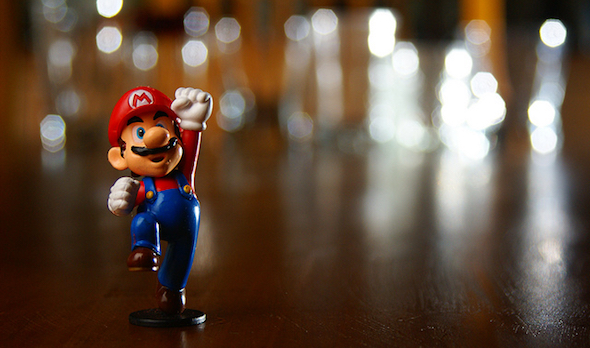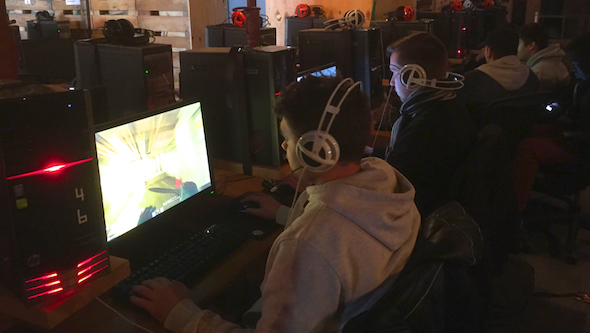7 Billion Gamers: Video Games Every-Freaking-Where!
This article was published in Inside Digimedia’s 2016 Casebook.
From its first experimental academic beginnings to the largest leisure industry in the world: the success story of video games is also the story of the world that is changing at an exponential pace with technological progress and a tribute to the predictions of Gordon Moore, the cofounder of Intel.
If the video game retains its irreducible detractors and adverse effects, its benefits for physical and mental health are increasingly established scientifically. But the cultural impact of this “young” leisure activity is still largely underestimated and the communication opportunities it offers brands is still too rarely exploited.
The global video gaming industry currently represents 100 billion dollars a year. A dizzying figure that greatly exceeds the revenue of the film and music industries combined. But beyond the figures, the benefits of video games on physical and mental health and its impact on culture and the way humans think and behave are so important that we may now speak, without fear, of a new paradigm. Comparable to the invention of wiring, printing and the discovery of the uses of electricity, the ubiquitous gaming is now making its mark on the history of humanity. That’s it.
More potential benefits than harm to health
With regard to the impact on health, the endless criticism of the influence of violent games on young people and gamers’ lack of physical activity relate more to the influence of violence in entertainment in general on the one hand and psychological and physical problems related to all types of addiction on the other. On the contrary, numerous studies have highlighted the potential benefits of video games for young and old.
In terms of learning and the plasticity of the brain for the very young, training in problem solving and maintaining attention to relevant stimuli (noise cancellation) for adults, for maintaining the intellect for the elderly, from rehabilitation following injury or posttraumatic stress… there are plenty of examples that relate to different types of games, from the simplest to the more advanced, whether played seated or while moving (Wii, Kinect, …). A search on “video game effects” in the academic search engine Google Scholar gives a staggering 1,380,000 references.
 ©Tom Newby Flickr
©Tom Newby Flickr
A cultural revolution or digital transformation
If merchandising licences and other variations (all arts) constitute a non-negligible part of the cultural influence of the industry, other, more unexpected, elements perfectly illustrate the cultural revolution we are experiencing. At the end of 2012, the Museum of Modern Art, in the heart of Manhattan, inaugurated a permanent exhibition dedicated to video games as part of the Architecture and Design collection – two terms that are also inseparable from video game production.
And in 2015, to celebrate 25 years of the Zelda saga, another major art pays homage to the video game (and vice versa): ‘The Legend Of Zelda – Symphony Of The Goddesses’ is a real classical symphony based on the soundtrack of the many volumes of this, already mythical, saga. More than a gimmick, there is a real world tour which has already been organised with over 40 dates planned in Europe and North America, Mexico and Chile. This is not four teenagers and their instruments: a world tour of a symphony orchestra required staggering logistics, huge financial resources and an audience ready to spend at least $60 on a ticket.
Hard-core gamers, casual gamers: 7 billion potential gamers
And that audience exists, if one can believe the huge success that passed almost unnoticed of the semi-finals of the World Cup that took place in Brussels on 24 and 25 October. Not a football here but League of Legends, a video game that has become an e-sport and whose contestants are true professional sportspeople: some make a very good living and are sponsored by major brands – generally from the new technology sector. 15,000 people came to fill Brussels Expo – transformed into a MOBA (‘multiplayer online battle arena’) for a weekend – to support their idols during these clashes between two teams of 5 players in the context of the most popular ARTS games (‘action real-time strategy’).
More than a social phenomenon, this is truly a new paradigm, with its codes, competitions, dedicated TV channels and live-streaming platforms, its stars, trophies and fans. But if hard-core gamers are becoming more numerous, what about casual gaming that has the support of a very broad public. There is necessarily more need for consoles or high-power computers to play online games, which amateurs play in hundreds of millions. Besides the irritating Facebook invites from your friends to play Farmville, Apple TV or, before that, the Nintendo Wii and games on smartphones, attract non-gamers with simple and intuitive games which do not require much time. And for nostalgic fans of Trivial Pursuit, you should know that it is now available on your phone.
An unprecedented opportunity for agencies and brands
One thing is clear however: Belgium is far behind countries like France, Canada, Japan, the United States and Korea in terms of widespread gaming. Far from being a flaw, this is an extraordinary opportunity for agencies that can take advantages of the many creative talents present to help brands to become relevant to the gaming generation. And if you do not believe me, come and join me at Botkamp at the next Brotaru, the monthly meeting for developers and other professionals, sometimes in the making, of the video game made in Belgium.
Our recent blog posts
See all blogs-
How is AI’s synthetic data enhancing User Experience Research? Technology

-
Web3.AI Rising : How new technology can add value to your business

-
How generative AI helped us create an e-commerce app – with personalised content – in just 2 weeks Technology

-
Can you build a foodie app in 3 days using Generative AI? (Spoiler alert: yes!)



